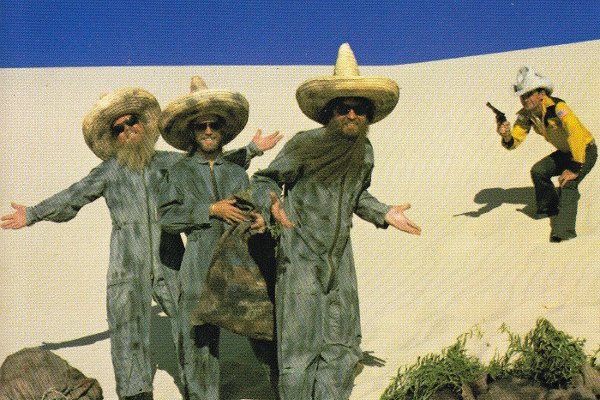ZZ Top spent the first seven years of their existence honing the sound that produced hits such as La Grange and Tush. But by the time the Worldwide Texas Tour concluded in 1977 – after 18 months on the road in support of their Fandango! album, during which time they set out to “bring Texas to the people” with a stage set that featured free-roaming Lone Star State livestock – the band were burnt out and in need of a break. When three months turned to two years, the trio emerged with their trademark beards, a new record label and a fresh sound which they unveiled on the Degüello album and then built upon for El Loco.
Listen to ‘El Loco’ here.
“It was a big growth period”
When the Worldwide Texas Tour was over, the group “were just exhausted”, bassist Dusty Hill later recalled. “We had literally been on the road since we formed in late ’69. Everybody just wanted to go do a little somethin’, ya know, get off the road.” During that break, Hill got a job at a nearby airport in order to, ironically, find some grounding, while drummer Frank Beard took the time to straighten out. Meanwhile, frontman and guitarist Billy Gibbons headed to Europe.
“We were going to take three months, just to kind of reorganise, relax a bit, chill out, which turned into six months, which became two years,” Gibbons later reflected. “And so I took off to see what was happening out there. I was pogoing with punks in England and then dipping into learning the ways of the gurus from India. It was a pretty wide-ranging set of unusual experiences. It was, I think, a big growth period.”
“We were eager to experiment”
By 1978, punk and new wave had infiltrated the mainstream, with albums from Blondie (Parallel Lines) and Talking Heads (More Songs About Buildings and Food), plus The Cars’ self-titled debut, shifting public interest away from the gritty guitar rock that had defined the early 70s. Refreshed and looking to distance themselves from the sounds and the subject matter of their previous records, ZZ Top began to assimilate a punk attitude into their sound for Degüello, before adding more new-wave touches for El Loco, whose use of synthesiser ushered in a new era for the group.




